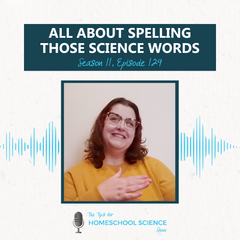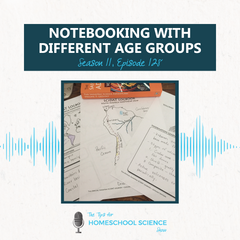FREE Shipping on all our products! (Please Note: Orders may experience a delay of a week or more in shipping due to the high volume of orders at this time of year.)
FREE Shipping on all our products! (Please Note: Orders may experience a delay of a week or more in shipping due to the high volume of orders at this time of year.)
Choosing and using living books for science - Living Books Session, part 1 {Episode 38}
February 12, 2018 2 min read
Choosing and using living books for science - Inspiring your students to love science through living books, Part 1 {Episode 38}
We all want to inspire our students - my guess is that this is one of the main reasons we have chosen to homeschool. One of my main goals is to help you all inspire your students to love science. And because of that, I am super excited to share with you all the first part of our next session - Inspiring your students to love science through living books. In this first section, we are going to chat about what exactly a living book is and how to choose one for science.
Hi, I’m Paige Hudson and you are listening to the Tips for Homeschool Science Show where we are breaking down the lofty concepts of science into building blocks you can use in your homeschool!
Listen to this episode
Share the Tips
If you found these homeschool science tips to be helpful, would you please take a moment to rate it on iTunes or Stitcher? This would help me tremendously in getting the word out so that more earbuds are filled with science-teaching encouragement.
Highlights

What is a living book?
- A living book is a book that engages the reader and draws them into learning more about a certain subject.
Key components of a living book
- Written by someone with a passion for the material or by someone who has experienced the story first hand.
- The author pulls the reader into the story.
- The writer presents the scientific or historical facts in such a way that the student hardly realizes they are learning.
Choosing living books for science
- Choose books that will engage the students.
- Choose books that are educational sound.
Decide between a living book or an encyclopedia based on:
- How much material you need to cover.
- How much time you have.
You can use living books as supplements to your current plan or as the main spine for your science studies.
Takeaway Tidbits
Living books make a subject come alive for your students. (Pin this Tidbit)
As homeschoolers, we can use both living books and encyclopedias for a well-rounded approach to learning about science. (Pin this Tidbit)
Additional Resources
See the full conference session - Inspiring your students to love science through living books.
Check out the following articles for more tips on choosing and using living books for science:
Also in {Podcast} The Tips for Homeschool Science Show
All About Spelling Those Science Words {Season 11, Episode 129}
March 25, 2024 7 min read

In this episode, we'll be interviewing Robin Williams from All About Spelling. Click "Read More" to listen is as we discuss tips and tricks for spelling all those science words!
How should you handle notebooking through the different ages? {Season 11, Episode 128}
March 18, 2024 3 min read

Writing in Science with a Well-Trained Mind (Interview) {Season 11, Episode 127}
March 11, 2024 16 min read

Click "Read More" to listen in as Susan Wise Bauer and Susanna Jarret join Paige to share tips and tools about the third key to teaching science!
Subscribe
Sign up to get the latest on sales, new releases and more …


